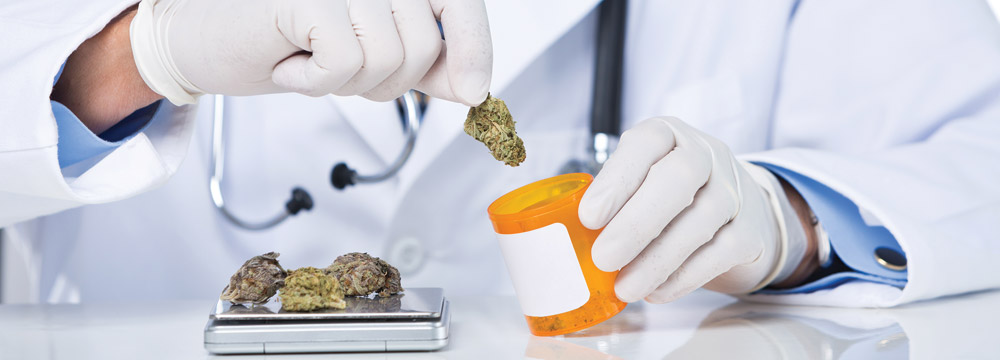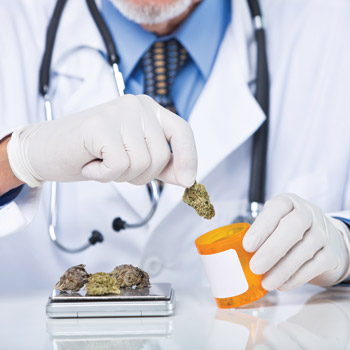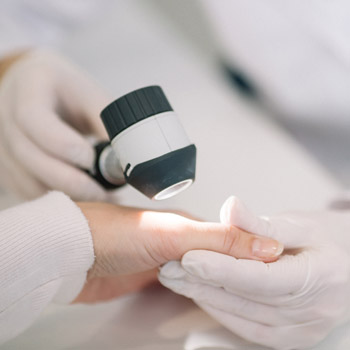
Weighing benefits, harms of cannabis
Marijuana use has risen, so internists need to understand its real risks as well as its potential clinical uses, such as for chronic pain, chemotherapy-induced nausea and vomiting, and multiple sclerosis spasticity symptoms.
While lollipops may not be a health food, they aren't usually considered dangerous. However, in the recent case report of a 70-year-old man with stable coronary artery disease, eating a marijuana lollipop landed him in the ED with crushing chest pain, hallucinations, and a heart attack.
The pain began about 30 minutes after the man consumed most of the lollipop, which contained 90 mg of tetrahydrocannabinol (THC), the main psychoactive component of marijuana. (For many edible marijuana products, a dose of THC is generally considered to be 10 mg.) According to the case report, published in the February 2019 Canadian Journal of Cardiology, the patient ultimately recovered and was discharged with a diagnosis of non-ST-segment elevation myocardial infarction.

“What we think happened is that he had what we call a supply-demand type of heart attack,” said case coauthor and ACP Resident/Fellow Member Alexandra Saunders, MD, chief internal medicine resident at Saint John Regional Hospital in New Brunswick, Canada. “His heart rate increased, his blood pressure increased, and this was all the fear and anxiety that he had after taking the lollipop. There wasn't enough blood that was getting to his heart muscle itself.”
Recreational marijuana was legalized in Canada in October 2018, but just because a substance is legal doesn't mean that it is safe, she said. “People should consider the dose that they're getting and should talk with their health care provider about it before they consider trying it on their own,” said Dr. Saunders.
In the wake of a case like this, it may appear that the safety of marijuana has gone to pot. But some internists believe that the oft-misunderstood and under-researched plant, despite its downsides, may have real clinical potential for some patients.
Discussing the harms
In the U.S., reported marijuana use is growing. The proportion of adults who said they used marijuana in the past year rose from 4.1% in 2001-2002 to 9.5% in 2012-2013, according to a study published in December 2015 by JAMA Psychiatry. Most recently, in a 2017 survey of about 9,000 U.S. adults, 14.6% reported using marijuana in the past year, according to results published in September 2018 by Annals of Internal Medicine.
But it's also a sticky subject. Since 2012, 10 states have legalized cannabis for recreational use, and many more have medical marijuana programs. However, at the federal level, THC is still considered a Schedule I substance. Making matters more complicated, the 2018 U.S. Farm Bill effectively legalized hemp, defined as cannabis with less than 0.3% THC on a dry weight basis, by removing its Schedule I status.
Hemp's legalization has important implications for the use of other components of the plant, including cannabidiol (CBD), which does not have hallucinogenic or psychoactive properties. Both CBD and THC are active ingredients in FDA-approved drugs, and the FDA has said that despite the legalization of hemp, it remains illegal to introduce CBD products into the food supply or market them as dietary supplements without agency approval.
Still, people in states that have legalized recreational cannabis, such as Oregon and California, can readily purchase THC and CBD products. Even in states that have not legalized cannabis, CBD products abound. Because of the increased availability of cannabis products, even internists who do not wish to recommend them to patients have a role to play in discussing benefits and harms, experts said.
One of the most important actions a primary care clinician can take is to ask patients if they use any form of the plant, and for what reason (e.g., medicinal, recreational), said Tina M. Kaufman, PhD, PA-C, an assistant professor of preventive cardiology at Oregon Health & Science University in Portland. “Frequently, since it has been more broadly legalized, the question goes unasked because both providers and patients believe it is relatively benign: ‘It's natural,’” she said.
As the case report showed, however, marijuana can lead to real harms. The available data (which are scarce, generally of poor or moderate quality, and mostly from case reports or small cohorts) suggest that smoking marijuana may increase the risk of acute coronary syndrome, myocardial infarction, stroke, heart failure, and death from hypertension in patients with either known cardiovascular disease or those at high risk for cardiovascular disease, said Dr. Kaufman. She coauthored an Ideas and Opinions piece on marijuana and cardiovascular disease, published in January 2019 by Annals of Internal Medicine as part of a special section featuring readers' perspectives on prescribing or recommending marijuana (see sidebar).
“I think it is incumbent upon the provider to ask about use, and make sure the patient is informed about potential adverse cardiovascular effects … but we definitely need more good-quality studies to help guide counseling and recommendations,” Dr. Kaufman said.
In the general population, driving while intoxicated from cannabis may be one of the biggest safety risks, said Kathleen A. Kenny, MD, FACP, a clinical associate professor of medicine in the department of primary care and population health at Stanford University in California. The period of intoxication is variable. For inhaled forms, it's generally under a few hours, but edible forms have a prolonged duration that can last up to eight to 10 hours, she said. “Time to onset of effect with edibles is much slower than with inhaled administration, also resulting in a higher risk of excessive dosing. I think all this information is slow to trickle down to the average internist, and yet we need to be able to advise our patients about these unique risks,” said Dr. Kenny.
The method of consumption matters for more general health reasons as well, said Dr. Kaufman. “I do think that modality matters, with smoking marijuana at the highest risk, as you have the added complication of inhaled carbon monoxide and tar,” she said. Dr. Saunders agreed, adding that if patients are going to partake, she recommends that they ingest rather than smoke for cardiovascular reasons. “The smoke is certainly not good for their lungs or the rest of their heart disease. But as for the dose … we don't have any recommendations for a safe amount,” she said.
Smoking cannabis also poses a risk of inhalation of Aspergillus, which has led to overwhelming fungal infections in some people with heavy use and immune system impairment, noted Brooke Worster, MD, FACP, an assistant professor of medicine and medical director of the Neu Center for Supportive Medicine and Cancer Survivorship at Sidney Kimmel Medical College in Philadelphia.
Inhaled and edible forms of cannabis are associated with different acute events as well, according to a study published in March 2019 by Annals of Internal Medicine. At one academic hospital in Colorado, cannabis-related ED visits attributable to inhaled cannabis were more likely to be for cannabinoid hyperemesis syndrome, whereas visits attributable to edible cannabis were more likely to be due to acute psychiatric symptoms, intoxication, and cardiovascular symptoms.
Psychiatric harms have been of much concern, particularly in young adults. In a systematic review and meta-analysis of 11 studies comprising more than 23,300 individuals, cannabis consumption at age 18 years or younger was associated with an increased risk of developing depression and suicidal behavior at ages 18 through 32 years, according to results published online in February by JAMA Psychiatry.
Finally, the potency of cannabis has dramatically increased over time. The change in the ratio of THC to CBD has increased from 14 times in 1995 to 80 times in 2014, according to an analysis of more than 38,600 samples of confiscated cannabis preparations in the U.S., which was published in the April 2016 Biological Psychiatry. One potential harm of higher-potency cannabis in the U.S. is that it may increase the risk for initial symptoms of cannabis use disorder, according to a study published in the February 2019 Drug and Alcohol Dependence. The National Institute on Drug Abuse reports that up to 30% of adults who used marijuana in the past year may have some degree of cannabis use disorder.
Considering the benefits
For all its potential harms, cannabis does seem to help with certain ailments. In addition, marijuana overdoses are rare and pose virtually no risk of death from toxicity alone (although deaths from accidents and underlying cardiovascular issues have been reported). “There are many drugs that we routinely prescribe with toxicity risks far greater than cannabis,” noted Dr. Kenny.
Before recreational cannabis became legal in California, she said she was not able to bring it up with her patients. Now that there is the freedom to do so, Dr. Kenny does mention it to patients with conditions that are not being treated well with traditional approaches. “Chronic pain is probably the one that stands out the most,” she said.
Indeed, chronic pain was by far the most prevalent indication (64.9% in 2016) reported by medical cannabis license holders in the U.S., according to an analysis published in the February 2019 Health Affairs. Of all qualifying conditions for medical marijuana, 85.5% (e.g., chronic pain, chemotherapy-induced nausea and vomiting, and multiple sclerosis spasticity symptoms) had either substantial or conclusive evidence of modest therapeutic efficacy, per a comprehensive review in 2017 by the National Academies of Sciences, Engineering, and Medicine, according to the report.
In Pennsylvania, which has legalized medical but not recreational marijuana, Dr. Worster, a hospice and palliative medicine subspecialist, most often recommends cannabis to treat pain and chemotherapy-induced nausea and vomiting.
“It's not a panacea; there are people who say it didn't work for them,” she said. “But by and large, most people say it is extremely helpful—more helpful than most of the antiemetics that I prescribe, certainly more helpful than any appetite stimulant that we have out there that's an FDA-regulated prescription, and a lot of people get some good relief for various types of pain and neuropathy.”
For people who are cannabis naïve, vaporizing the oil may be the easiest method of administration because of the rapid onset of action, Dr. Worster said. “You have a little bit better of an understanding of how it's going to impact you, so you can titrate it a little bit differently,” she said.
On the other hand, Dr. Worster recommends that patients who ingest cannabis “start low and go slow” because it takes at least 90 minutes to be hepatically metabolized, which can produce more psychoactive effects of THC compared to inhalation. “There's a little bit more education that I think is necessary when you're giving people the oral option if they've never had it before,” said Dr. Worster, who prefers that patients use a tincture or concentrated oil rather than edible food products that attract children.
Dr. Kenny's patients who find cannabis medically helpful most often report that it helps their pain, nausea, and insomnia, she said, adding that she documents use in the EHR in their social history, but not in their medication list. “That might be a potential issue if we think there's a significant interaction between marijuana and a pharmaceutical-grade product that we're prescribing, but I haven't heard of any significant [interactions],” she said.
While THC is well known for its psychoactive properties, it has therapeutic effects as well, said Dr. Worster. “THC is active in your central nervous system at your CB1 receptors, and that's what gives the antiemetic and antianorexic effect,” she said, adding that optimal dose and THC-to-CBD ratio depends on the individual patient.
On the other hand, CBD oil seems to interplay with not just CB1 receptors, but also with CB2 receptors, which are found abundantly in inflammatory cells and the lymphatic system, said Dr. Kenny. “So the idea that it might modulate chronic pain, fibromyalgia, and other diseases related to uncontrolled inflammation has biological plausibility,” she said. “I expect that there will be more funding for research on the effects of CBD products in treating these conditions for which traditional medical therapies have often fallen short.”
More clinical research is coming. For instance, in 2018, Pennsylvania's medical marijuana program certified eight medical schools as Academic Clinical Research Centers, including Sidney Kimmel Medical College. “Pennsylvania is the only state that has this as a part of their medical legalization. … I think it's a phenomenal opportunity, which is why I've been so vested in it,” said Dr. Worster, who oversees research efforts at the institution.
The program requires cannabis growers, producers, and dispensers to fund clinical research at the academic medical centers, which is overseen by institutional review boards and will provide patient-facing data, she explained.
“We [may] have some understanding of how [cannabis] impacts people's symptomatology, their quality of life, and what other polypharmacy you're able to reduce,” Dr. Worster said. In contrast with past studies of cannabis in the U.S., studies conducted by the research collaborative will be able to test various forms of cannabis, not just products grown at the University of Mississippi, she added. For decades, the school has contracted with the federal government to cultivate marijuana for research in the U.S., including FDA-approved clinical trials.
While waiting on future research, internists in states with medical marijuana programs must step in to counsel patients as best they can, said Dr. Worster. “I wish internists knew how important it was to give patients some form of medical guidance,” she said. “Don't leave it up to dispensaries. They don't have the medical expertise that you do. … We need to look at this like a medical therapeutic and give patients some guidance in what to do.”



